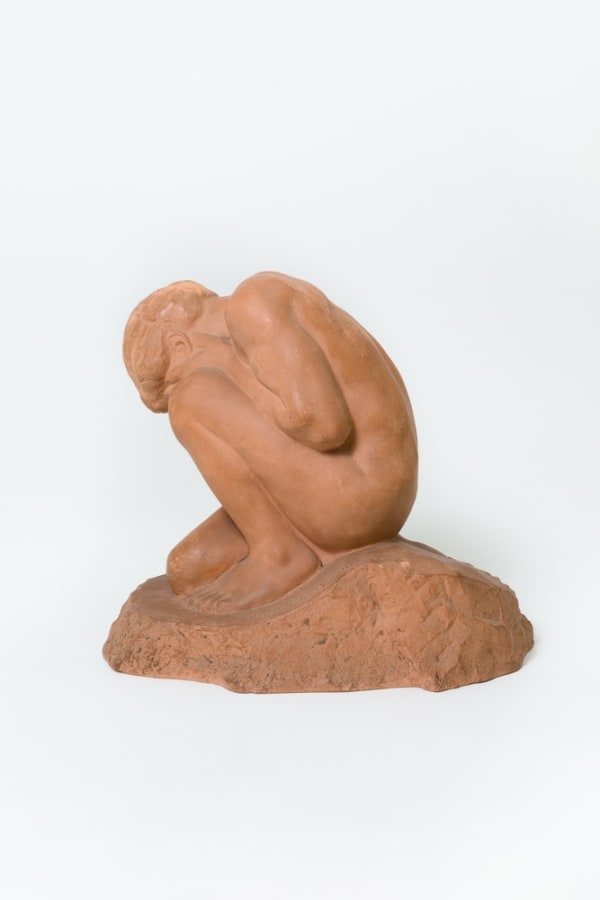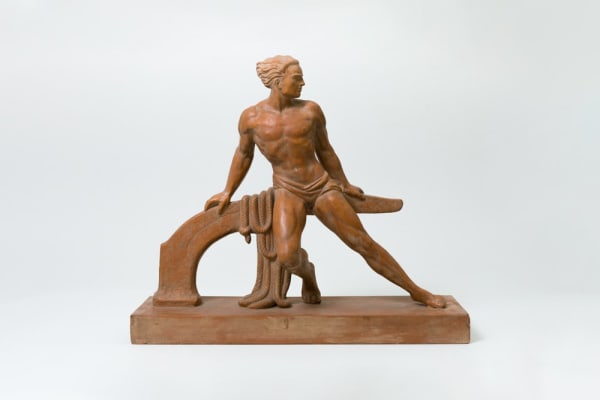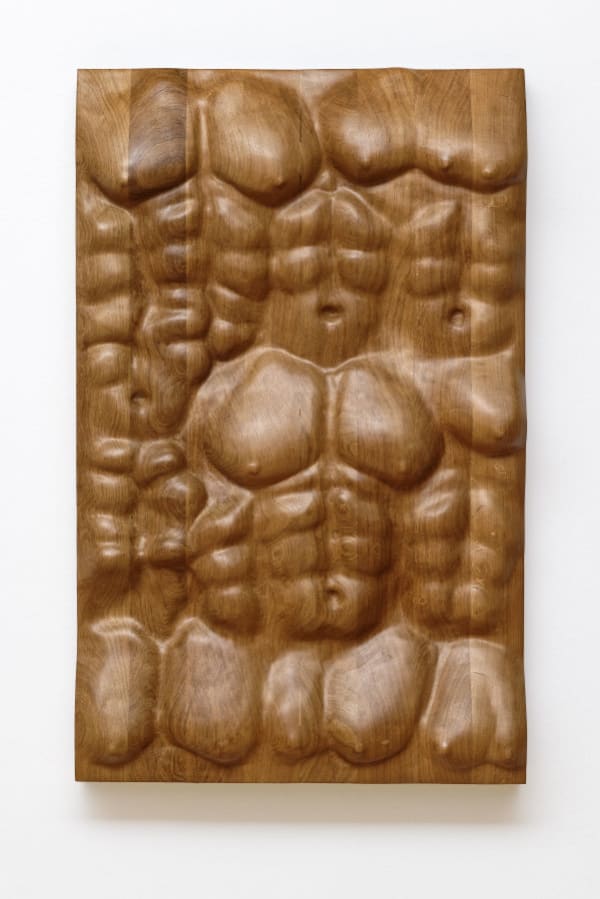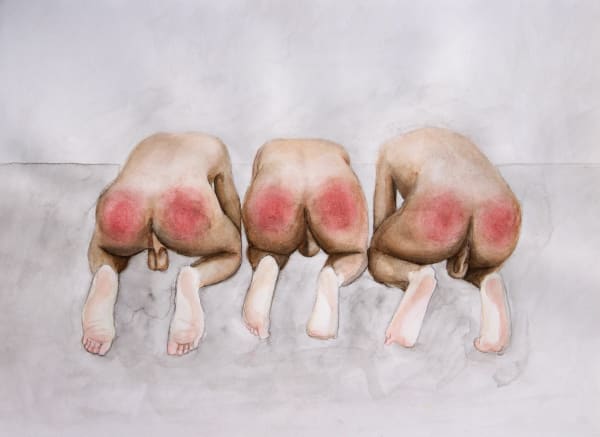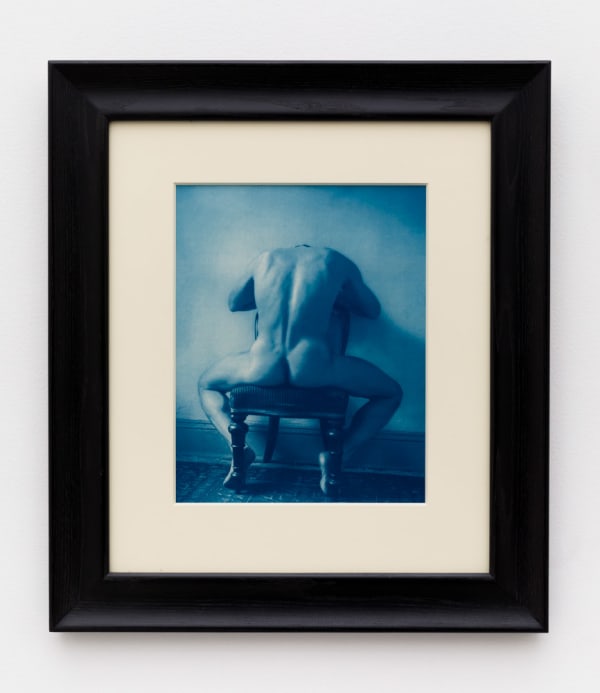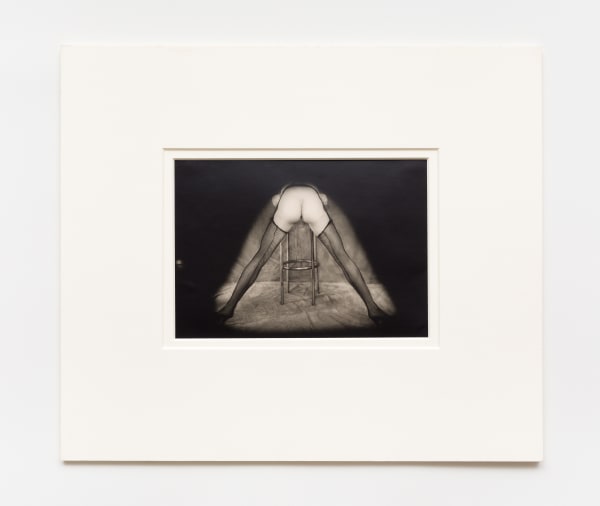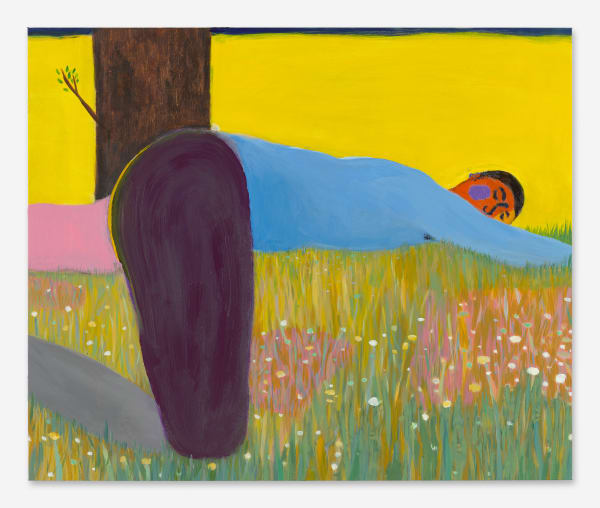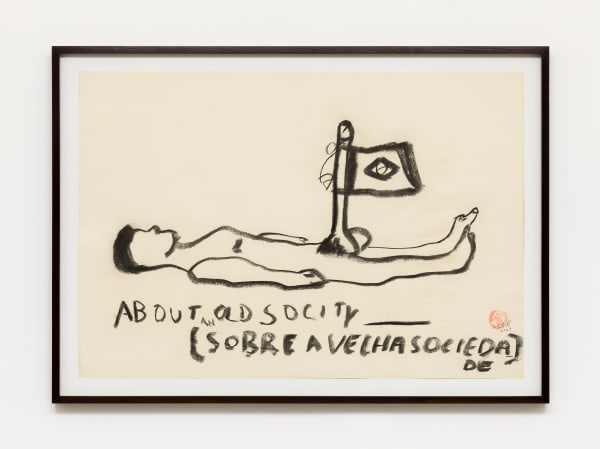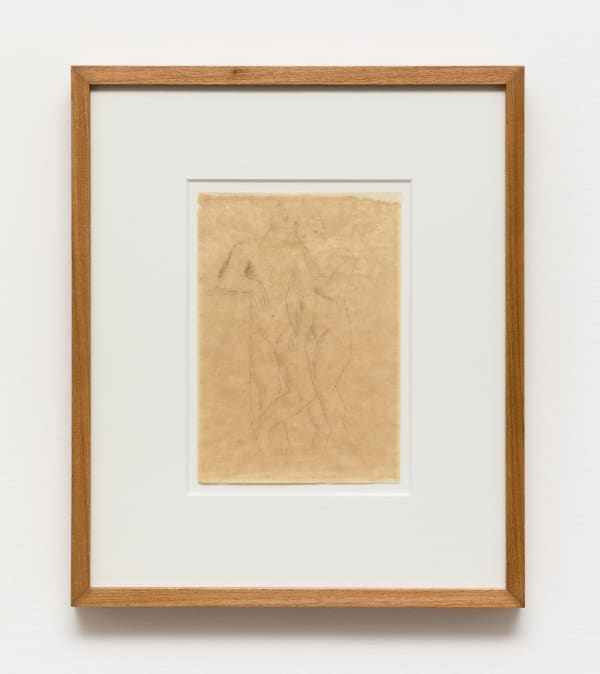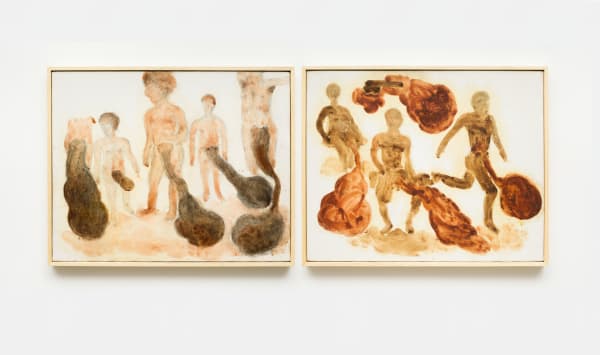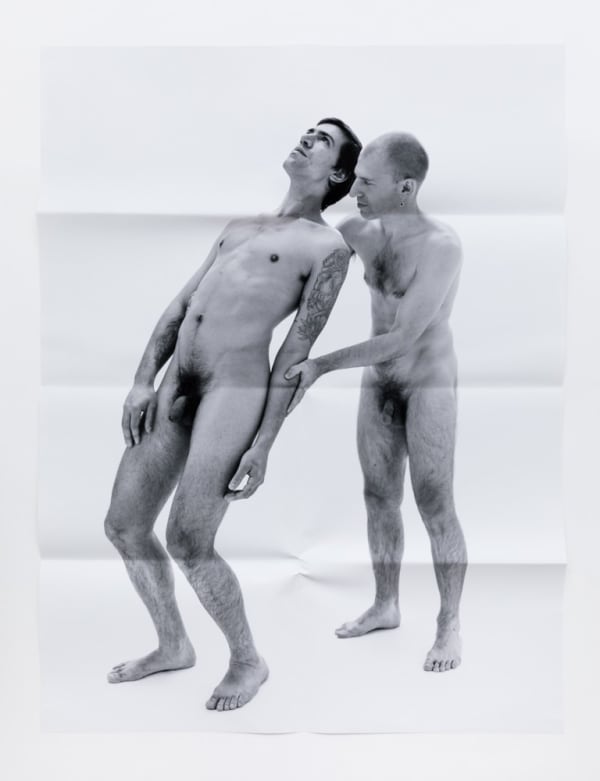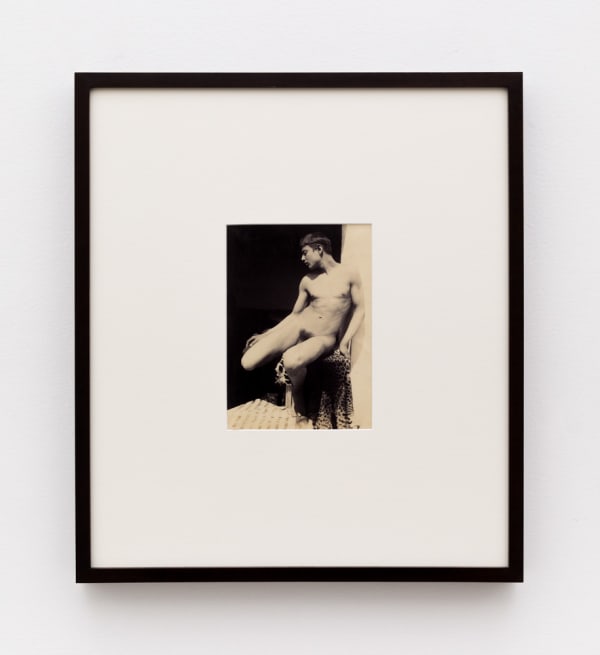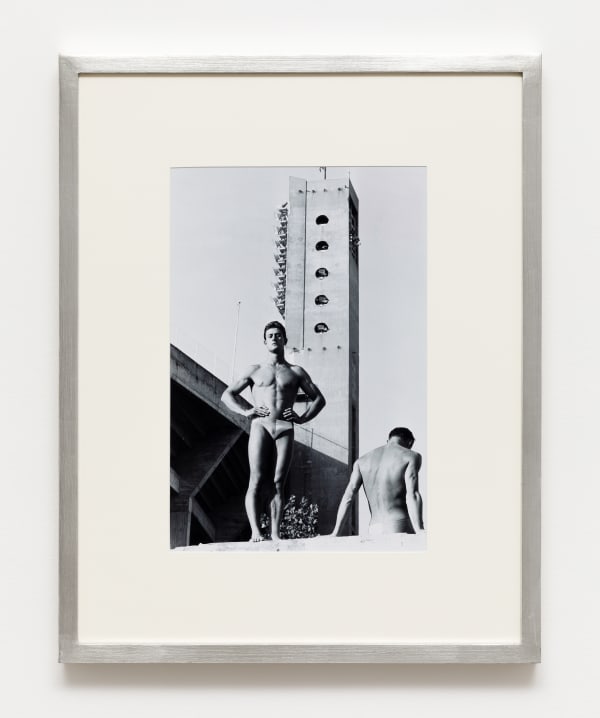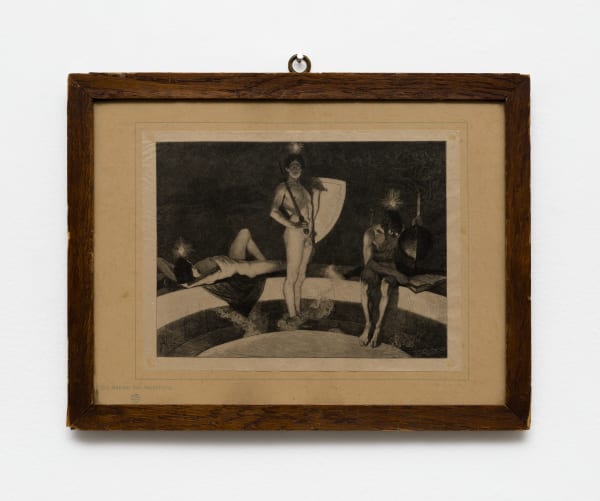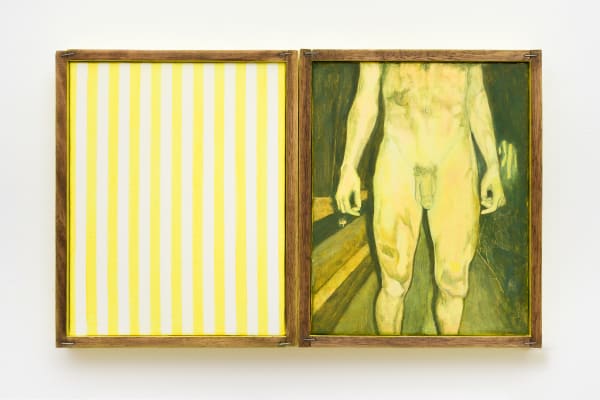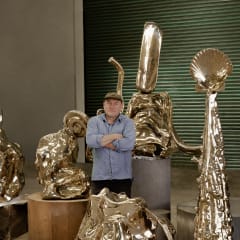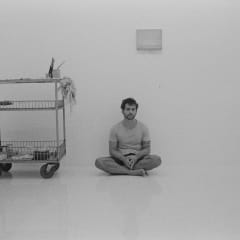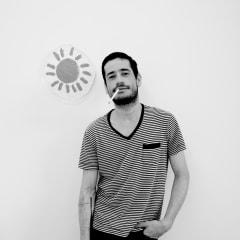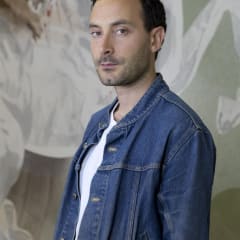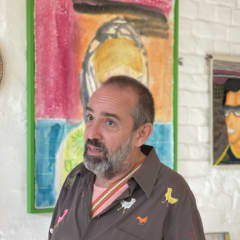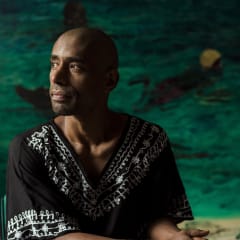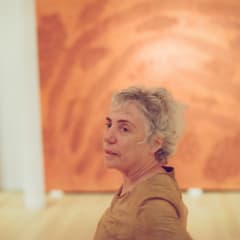Male Nudes a salon from 1800 to 2021
Mendes Wood DM is proud to present the group exhibition Male Nudity: a salon from 1800 to 2021. Intersecting representations of the male nude, the show proposes to reflect on the concepts of copy, imitation, image, time and decline.
According to conventional historiography, the first representation of nudity in the history of humankind was found at an archeological site in Austria. The Venus of Willendorf was classified as an artifact from 30,000 BCE in 1906. Historical-scientific evidence suggests that the piece originated in France and was carried by nomadic populations as a sort of fertility goddess. Jumping from the Paleolithic era to the end of modern history, the exhibition traverses several concepts and reflections on nudity, such as ordinary and essential representations in Greek and Egyptian art; the criminalization of nudity as a Christian tool of power and expansion; the Italian renaissance; responses to and imitations of the Greeks; baroque hyper-naturalism; and the vernacular gaze of contemporary photographers as proposed by Spinoza – the body as an integral and integrated part of nature.
It would be impossible to dissociate the male nude from the social and thus political representation of masculinity in our Anthropocene. In fact, this association is fundamental in any discussion about body and image. The representation of violent and absolutely distorted male superiority and the exercise of male dominance over dissident bodies have been proclaimed as “normal” or “natural” throughout history. The alleged authority of masculinity is closely linked to an idea of sex where “real” men must be sexually “potent” and exude “sexual power”. Lacking an accurate understanding of human sexuality, man considers “sex” as yet another tool of power, domination and control; therefore, representations of the male body are morally rejected, whilst representations of the female body are seen as natural beauty, and an object of ownership and consummation.
When reflecting on the representation of power as a way of oppressing language and all its possible repercussions, the male nude can be understood as a means of challenging male power through the “feminization” of the form, suggesting fragility in the language generated by the image.
This refusal of power in favor of natural beauty found fertile ground in Ancient Greece; in several observational drawings produced by the École Française du XIXème that draw on the decline of the body and show a tragic perspective of humanity; in the anatomical gaze that gives way to the transformation of the body into a product and reproduction in Warhol’s photocopied Torsos; in the vernacular recordings of youth by Larry Clark; and in the documentation of the male body’s transformations and possibilities in Fernanda Azou’s paintings of her transsexual brother.
This exhibition proposes to explore history without its own weight, without the contrived character of time weighing on the artist’s works. The absence of rules will allow a body-scale drawing by Picabia to interact with Solange Pessoa’s erotic drawings that evoke images found in Brazilian archeological sites. While intersecting Mapplethorpe’s male body adoration and Wilhelm Von Gloeden’s mythological narratives, the show also converges the perspective of Tarsila do Amaral and Eliseu Visconti as modern observers of form.
These works are presented as constellations of bodies present in art, bringing together, in a reference to the Salon des Refusés of 1787, a representation of the body that evokes a game of imitation inherent to artistic practice, both in its moral aspect and as a language tool, fully exposing the fragilities of the portrayed body, its impossibility, beauty and temporality.
-
 Ecole Française vers 1920
Ecole Française vers 1920 -
 Ecole Française vers 1940
Ecole Française vers 1940 -
 Soufiane Ababri
Soufiane Ababri -
 Mark Beard
Mark Beard -
 Eugène Bourgouin
Eugène Bourgouin -
 Athos Bulcão
Athos Bulcão -
 James Lee Byars
James Lee Byars -
 Jean-Daniel Cadinot
Jean-Daniel Cadinot -
 Joseph Caprio
Joseph Caprio -
 Raymond Carrance
Raymond Carrance -
 Raymond Carrance
Raymond Carrance -
 Raymond Carrance
Raymond Carrance -
 Flávio de Resende Carvalho
Flávio de Resende Carvalho -
 Matheus Chiaratti
Matheus Chiaratti -
 Ugo Cipriani
Ugo Cipriani -
 Larry Clark
Larry Clark -
 Jean Cocteau
Jean Cocteau -
 Corbeau
Corbeau -
 Adriano Costa
Adriano Costa -
 Adriano Costa
Adriano Costa -
 Fernando Marques Penteado
Fernando Marques Penteado -
 Fernando Marques Penteado
Fernando Marques Penteado -
 Tom of Finland
Tom of Finland -
 Tom of Finland
Tom of Finland -
 Agence Fulgur
Agence Fulgur -
 Léon Galand
Léon Galand -
 Luc Geslin
Luc Geslin -
 Daniel Dewar & Grégory Gicquel
Daniel Dewar & Grégory Gicquel -
 Bruno Giorgi
Bruno Giorgi -
 Wilhelm Von Gloeden
Wilhelm Von Gloeden -
 Alair Gomes
Alair Gomes -
 José Fiuza Guimarães
José Fiuza Guimarães -
 José Fiuza Guimarães
José Fiuza Guimarães -
 Antonio Manuel
Antonio Manuel -
 Francisco Hurtz
Francisco Hurtz -
 Francisco Hurtz
Francisco Hurtz -
 Daniel Lannes
Daniel Lannes -
 Daniel Lannes
Daniel Lannes -
 Xie Lei
Xie Lei -
 Xie Lei
Xie Lei -
 Patricia Leite
Patricia Leite -
 Fernanda Azou Lima
Fernanda Azou Lima -
 Robert Mapplethorpe
Robert Mapplethorpe -
 McDermott & McGough
McDermott & McGough -
 Daniel Correa Mejía
Daniel Correa Mejía -
 Daniel Correa Mejía
Daniel Correa Mejía -
 Daniel Correa Mejía
Daniel Correa Mejía -
 Pierre Molinier
Pierre Molinier -
 Pierre Molinier
Pierre Molinier -
 Pierre Paul Montagnac
Pierre Paul Montagnac -
 Shota Nakamura
Shota Nakamura -
 Shota Nakamura
Shota Nakamura -
 Paulo Nazareth
Paulo Nazareth -
 Paulo Nazareth
Paulo Nazareth -
 Paulo Nazareth
Paulo Nazareth -
 Ismael Nery
Ismael Nery -
 Ismael Nery
Ismael Nery -
 Antonio Obá
Antonio Obá -
 PaJaMa
PaJaMa -
 PaJaMa
PaJaMa -
 PaJaMa
PaJaMa -
 Rodolpho Parigi
Rodolpho Parigi -
 Wallace Pato
Wallace Pato -
 Solange Pessoa
Solange Pessoa -
 Francis Picabia
Francis Picabia -
 Jack Pierson
Jack Pierson -
 Jack Pierson
Jack Pierson -
 Guglielmo von Plüschow
Guglielmo von Plüschow -
 Martine Riviere
Martine Riviere -
 Luiz Roque
Luiz Roque -
 Thomaz Rosa
Thomaz Rosa -
 Johann Moritz Rugendas
Johann Moritz Rugendas -
 Patrick Safarti
Patrick Safarti -
 Osmar Schindler
Osmar Schindler -
 Sascha Schneider
Sascha Schneider -
 Paula Siebra
Paula Siebra -
 Gustavo Silvamaral
Gustavo Silvamaral -
 Sarah Lucas and Julian Simmons
Sarah Lucas and Julian Simmons -
 Wolfgang Tillmans
Wolfgang Tillmans -
 Unknown
Unknown -
 Erika Verzutti
Erika Verzutti -
 Eliseu Visconti
Eliseu Visconti -
 Eliseu Visconti
Eliseu Visconti -
 Eliseu Visconti
Eliseu Visconti -
 Andy Warhol
Andy Warhol -
 Bruce Weber
Bruce Weber -
 Bruce Weber
Bruce Weber -
 Maya Weishof
Maya Weishof -
 C.J. Wielhorski
C.J. Wielhorski -
 Ecole française du XIXème
Ecole française du XIXème -
 Matthew Lutz-Kinoy
Matthew Lutz-Kinoy





